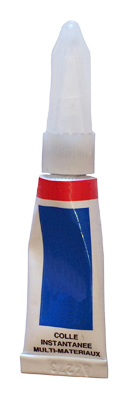 Removing glue from carpet is not only “sticky” and can ruin fabrics and carpet. But, it’s also “tricky” to remove! In order for glue to be removed without any damage to your carpet it must be done properly. Glue’s such as cyanoacrylate “super glue” is an acrylic resin that bonds to plastic, metal, and carpet due to a chemical reaction. Since, cyanoacrylate glue is different from most water based glue the removal process is also different. Most water based glue can be removed with warm water. Typically, super glue will dry much faster and harder than other glue. Therefore, there are several ways of removing super glue. Doing your research before trying to remove super glue will save you time and money! To all that are willing to do some hard work and don’t mind getting a little dirty. Here is some information on removing super glue from carpet.
Removing glue from carpet is not only “sticky” and can ruin fabrics and carpet. But, it’s also “tricky” to remove! In order for glue to be removed without any damage to your carpet it must be done properly. Glue’s such as cyanoacrylate “super glue” is an acrylic resin that bonds to plastic, metal, and carpet due to a chemical reaction. Since, cyanoacrylate glue is different from most water based glue the removal process is also different. Most water based glue can be removed with warm water. Typically, super glue will dry much faster and harder than other glue. Therefore, there are several ways of removing super glue. Doing your research before trying to remove super glue will save you time and money! To all that are willing to do some hard work and don’t mind getting a little dirty. Here is some information on removing super glue from carpet.
As mentioned above there are two methods to remove super glue from carpet. You can either trim out the glue with a carpet knife or use acetone. But, you must be very careful. There is a downside to these methods. First, when using a carpet knife you risk the chance of injury to yourself and the carpet. When using acetone on carpet you run the risk of discoloring the carpet fibers and the fumes are harmful. I recommend using a professional carpet cleaning service that is qualified to use these methods. If not, here is how to Do It Yourself.
Trim Out Method
Before you start the removal process, there are a few tools required to do the job correctly. You will need a pair of carpet scissors and some patience. These can be purchased at your local hardware store. The method is recommended for a surface removal only! Basically, if the super glue is on the surface of the carpet fiber and not buried into the carpet fiber. If not, you will end up with bare patches in your carpet! So, only use this process if the glue is on the surface.
1. You need to examine the carpet so you can choose the proper method.
2. Take your carpet scissors and insert the tip under the dried super glue.
3. Make sure you lift the scissors up so they make contact with the bottom of the glue surface (this will ensure that you do not cut too much of the fiber) and then snip the dried glue out of the fiber. This process works very well…pay attention to the fibers length after the glue is removed and brush the carpet lightly.
Acetone Method
When using chemicals, safety is important! Especially, chemicals that omit harmful fumes and can cause respiratory problems. Also, read the label for “Directions for Use” so all of the proper safety measures can be used. When using Acetone, you need to work in a well ventilated area. So, if using Acetone inside make sure you open all doors and windows to get clean air. This method is used for more severe super glue problems. If the glue is in the carpet fiber, this is the process you will want to use. But, before you start the process, you need to test the carpet first. The best spot to test carpet for discoloration is in a spot that is not visible. A closet is a good place to test carpet for color fade. You will need a dropper to do this. Squeeze 3-4 drops of acetone onto a test spot and look for color fade. If the color of the carpet begins to run or fade then stop immediately. Use a dry wash cloth to soak up the leftover acetone. If the carpet does not run or fade then you are good to go. Here is a list of things you will need to finish the job. You will need a dropper, acetone, q-tip, toothbrush, laundry detergent and a bowl of water.
1. Use the dropper and apply 3-4 drops of acetone onto the glue spot.
2. Let soak for about 5 minutes.
3. Use the toothbrush or q-tip to agitate and loosen glue from fiber. You can use the q-tip to apply the acetone to the glue as well. Do not agitate too much or the carpet fiber can be damaged. Be sure to rinse the toothbrush or q-tip between cleanings.
4. The glue will begin to dissolve and leave the carpet fiber clean.
5. After you have achieved the desired results, you need to rinse the carpet fibers.
6. Mix 3-4 drops of laundry detergent with a new bowl of water. Mix until bubbles appear.
7. Dip toothbrush or q-tip into the soapy bowl and agitate glue spot gently. This will remove and rinse the area of any residue.
Leave A Comment